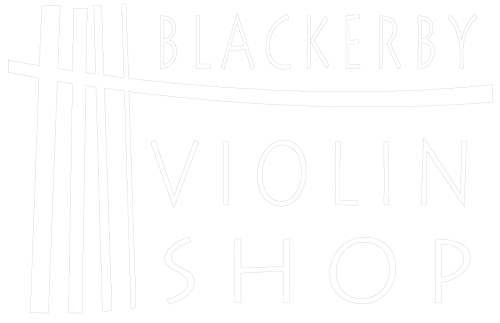Bow Selection
Click the following links to browse our wide selection of violin bows, viola bows, cello bows, and bass bows for a wide array of instrumentalists.
First things first, it’s best to establish and outline some criteria when searching for your new bow. Are you looking for a new sound? More durability? Maybe a different type of response, such as a bow that’s more tip or frog heavy? Something more comfortable and playable?
Once you’ve clarified your priorities and criteria, it can be helpful to determine a price range that works for you. Bows come in an array of price ranges and qualities, and luckily we carry an variety of bows that fit different levels of players particular needs.
Once you have an idea of what you’re seeking in a bow, and once you know what price range you’re working in…
…the best way to choose the bow that’s right for you, is to try as many as possible.
It’s important to do so on your instrument, as each bow plays differently on each violin, viola, cello, or bass. By doing so, you expand your familiarity beyond what you're accustomed to, and gain more context for what different bows feel, play, and sound like. Bring your instrument into the shop, and try out our bows you think might be a good fit for you!
In regards to nuance and playability, there are several qualitative aspects of bows to consider: balance, weight, flexibility, material, and ultimately sound production.
Balance is crucial for bows, and each bow should have a natural balance point about a quarter of the length up from the frog end. A well-balanced bow will feel comfortable, and allows for consistent sound from frog to tip across all strings.
Weight also affects playing technique. Lighter bows can be easier to maneuver, but may not produce as full of a sound. Heavier bows may sound richer, but can be harder on the player. Lighter weight bows may be really helpful for those who may have had past injuries or live with arthritis.
The flexibility of the bow determines how responsive the bow plays at different pressures. Bows should be flexible, as to be responsive and lend to nuance and sensitivity. A more flexible bow may produce a more expressive and nuanced sound. Such bows may also be harder to control, and require skill and finesse to use. More rigid bows do not allow for as much expression, although more direct and easier to control.
A bow’s material greatly affects its sound and feel. For a very long time, bows were carved from Pernambuco, which was prized for sound but tragically has now become endangered and is illegal to export from Brazil. Ipe has come up in replace of it, as a faster growing wood.
Different woods, as all materials, produce different qualities of sound.
Carbon fiber has also become popular amongst players, and is often preferred by those who are more comfortable with a lighter weight bow, as well as by those who often play outside, as heat and humidity won’t affect string tension as much and will not warp the stick. Other synthetic composites, like fiberglass, are sometimes used for student bows as well. Synthetic bows can also be a good option for beginners, but are more rigid, not as responsive, and don’t last as long.
If you’re looking for longevity, the goal should be a quality bow that can be rehaired. Bow hair is just as important as the wood or other material used for the stick. Horse hair is still the preferred hair for bows by far, although some synthetic hairs are on the market today.
Ultimately, clarity and resonance are the most important in regards to sound production. A truly great bow will highlight the best of your playing, complement your instrument, be comfortable, and lend itself to nuance.
Always remember, different players have different priorities, and it’s important to remember that fine details of musicality are highly nuanced and often subtle, so go with what feels good, sounds good, and works for you!





